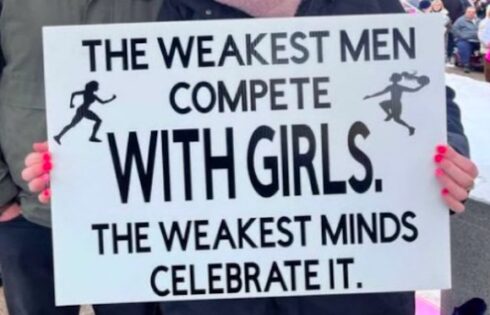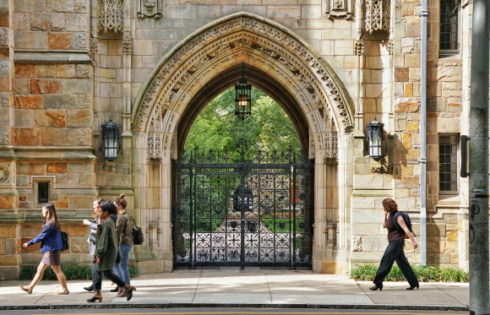
You can still consent in a ‘blackout’ – but you may forget doing it
If you’ve seen media outlets reporting on a new survey of campus sexual assault, there are a few things you probably haven’t learned from them.
Namely, everything important about the survey design – including how it defines key terms.
The Association of American Universities released its first survey in four years on campus sexual assault and misconduct this week. It covers 33 elite institutions, 12 more than the 2015 survey, which had largely the same problems.
Like its predecessor, the 2019 survey portrays these institutions as hotbeds of sexual assault: 26 percent of “women undergraduates” in the 2018-2019 school year have been victims of “nonconsensual sexual contact by physical force or inability to consent” since they enrolled at their schools.
If you ask yourself why any loving parent would let her 18-year-old attend a school where she has a 1 in 4 chance of being sexually victimized, you are smarter than many reporters covering the story.
They apparently didn’t think to look at the glossary of terms in the 433-page survey, which is based on self-reported (subjective) answers.
The first major red flag: “sexual contact” includes “sexual touching,” which includes kissing, touching a “breast, chest, crotch, groin, or buttocks,” or touching someone “in a sexual way, even if the touching is over the other’s clothes.”
In other words, that last category depends on how a reporting student perceived any act of touching – with no regard for intent, duration or even body part touched. An accidental grazing of a shoulder could be reported by a student as “sexual touching.”
“Inability to consent or stop what was happening” appears 174 times in the survey results. It is defined as the student being “unable to consent or stop what was happening because they were passed out, asleep, or incapacitated due to alcohol or drugs.”
“Passed out” and “asleep” seem fairly objective. But “incapacitated due to alcohol or drugs” – which are involved in the vast majority of Title IX due process lawsuits I’ve reviewed – is not.
It’s never defined in the survey, even though some schools treat any alcohol consumption by an accuser as strong evidence that she (and it’s invariably “she” in heterosexual disputes) could not consent.
Students also tend to re-evaluate their sexual encounters after the fact in light of whether and how much they were drinking. Not being able to remember the entire encounter – having targeted blackouts – sometimes convinces them that they couldn’t consent.
This is a common fallacy that ignores the science of memory formation. As an Ohio State pharmacology expert testified in a lawsuit against his own university, having a “blackout” simply means that short-term memories aren’t being transferred to long-term memory.
It says nothing about a person’s ability to consent to sexual activity during the “blackout,” especially if other evidence (text messages, video surveillance, witness statements) suggests she was capable of consent.
MORE: Notion of campus rape crisis falls apart when you dig into the data
“Coercion” is similarly slippery. It’s explicitly defined as “serious non-physical harm or promised rewards,” including a threat to “share damaging information” about the other person to friends, family or “online.” What is considered “damaging”? Also left to the determination of the reporting student.
“Sexual harassment” includes “behaviors with sexual connotations” that had a negative effect on the reporting student’s “academic or professional performance” or “created an intimidating, hostile, or offensive social, academic, or work environment.” This is also subject to the reporting student’s perception of “sexual” behaviors and their subjective threshold of a negative environment.
The inflated nature of the survey’s findings may be best illustrated by the definition of “without voluntary agreement.”
In order for sexual activity to start and remain consensual, it must have “the individual’s active,
ongoing voluntary agreement.” If one party in the encounter is “ignoring cues to stop or slow, went ahead without checking in or while the person was still deciding,” or “otherwise failed to obtain the person’s consent,” the encounter is “without voluntary agreement.”
This covers practically every sexual encounter in the college context, where sexual partners are unlikely to be in a long-term relationship; perceptions are slowed down by alcohol or drug consumption; and partners provide ambiguous signals that they want to stop.
A student whose enthusiasm waned during a sexual encounter – and whose partner didn’t ask “why is your enthusiasm waning?” – would count as a victim under the survey’s exceedingly broad definition of “voluntary agreement.”
Other red flags: The response rate was 22 percent overall, and higher for women (26 percent), graduate and professional students (25 percent) and those who had received “incentives” to participate (28 percent). The “incentive” was a $5 gift card:
A total of 18 schools randomly assigned students to an incentive. However, four of these schools assigned the incentives to subgroups to improve response rates for particular students.
Response rates also varied dramatically by public (17 percent) versus private school (31 percent).
Altogether, this means the survey is skewed toward responses by women, non-undergraduates, incentivized students and those at private schools – the latter category most steeped in sexual paranoia, to quote the perennially embattled Northwestern University professor Laura Kipnis.
As noted by Brooklyn College Prof. KC Johnson when analyzing Yale University’s new semi-annual report on reported sexual misconduct, the average age of reporting students has gone up nationally.
The co-author of The Campus Rape Frenzy attributes this to the vast indoctrination that older students have experienced throughout their college years, having been educated in an “accuser-friendly Title IX environment.”
When the AAU, individual colleges and “rape culture” activists distribute surveys with vague or outlandish definitions – creating a picture of “sexual assault” that is unrecognizable anywhere but campus – we should expect that subsequent surveys will continue to provide unreliable data.
The only people who are helped by living in this fantasy are Title IX administrators and rape culture activists. Their power grows at the expense of incoming students, particularly young women, who are taught they have no agency right as they start adulthood.
MORE: Yale punishments suggest that sexual misconduct on campus is vastly overstated
IMAGE: Yury Zap/Shutterstock
Like The College Fix on Facebook / Follow us on Twitter







Please join the conversation about our stories on Facebook, Twitter, Instagram, Reddit, MeWe, Rumble, Gab, Minds and Gettr.